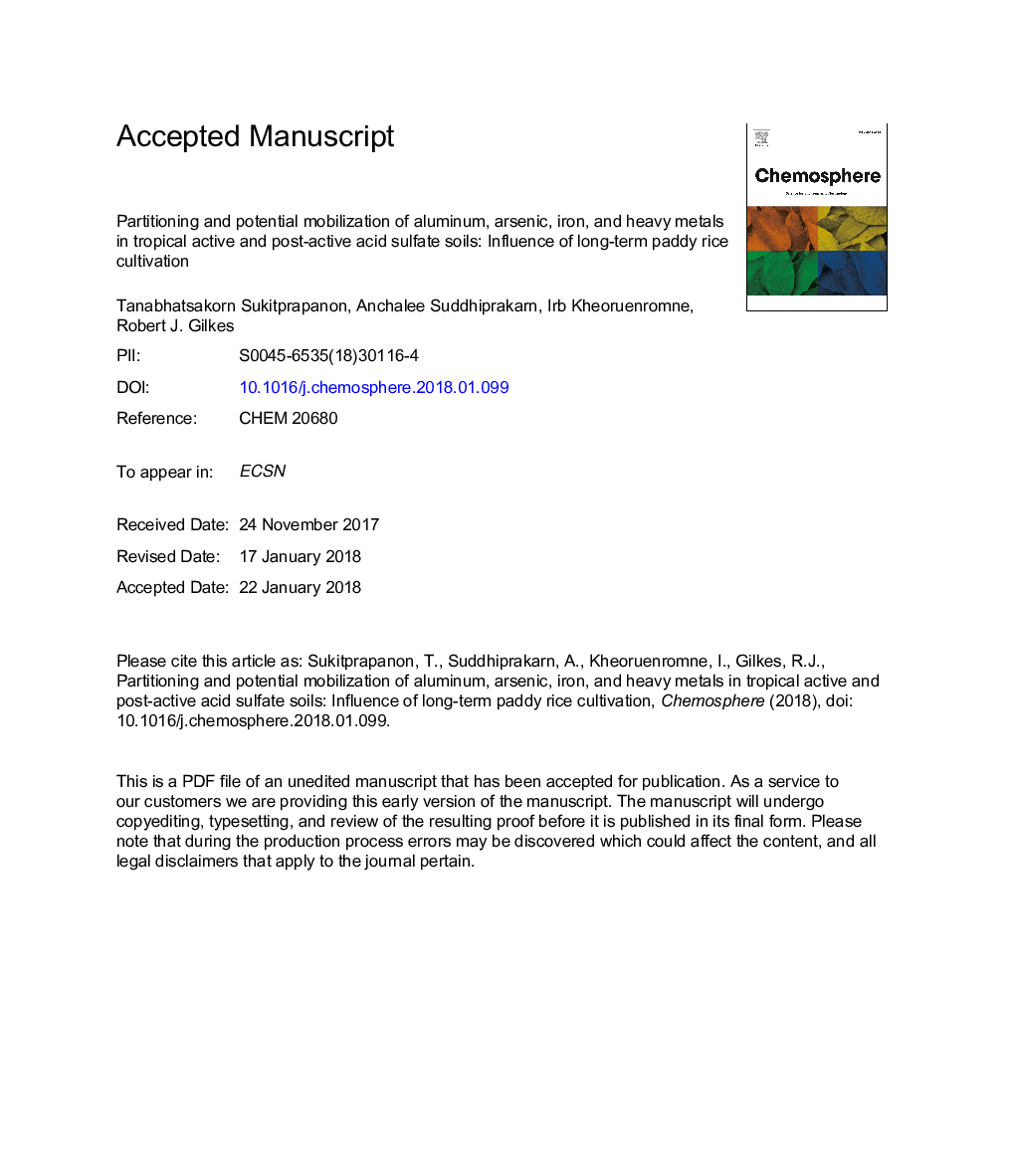| کد مقاله | کد نشریه | سال انتشار | مقاله انگلیسی | نسخه تمام متن |
|---|---|---|---|---|
| 8851976 | 1618774 | 2018 | 35 صفحه PDF | دانلود رایگان |
عنوان انگلیسی مقاله ISI
Partitioning and potential mobilization of aluminum, arsenic, iron, and heavy metals in tropical active and post-active acid sulfate soils: Influence of long-term paddy rice cultivation
ترجمه فارسی عنوان
تقسیم بندی و بسیج بالقوه آلومینیوم، آرسنیک، آهن و فلزات سنگین در خاک های سولفات فعال و پس از فعال گرمسیری: تأثیر طول عمر کشت برنج
دانلود مقاله + سفارش ترجمه
دانلود مقاله ISI انگلیسی
رایگان برای ایرانیان
کلمات کلیدی
استخراج متوالی، عناصر بالقوه سمی، خاکستر اسید سولفات فعال و پس از فعال گرمسیری، کشت زراعی برنج درازمدت،
موضوعات مرتبط
علوم زیستی و بیوفناوری
علوم محیط زیست
شیمی زیست محیطی
چکیده انگلیسی
Drainage of potential acid sulfate soils (PASS) for paddy rice cultivation results in the formation of active acid sulfate soils (AASS) and subsequently post-active acid sulfate soils (PAASS). The drainage of PASS causes severe environmental problems including acidification and metal contamination of soil and water resources. This study examined the vertical distribution and partitioning of Al, As, Co, Cu, Fe, Mn, Ni, Pb, and Zn in six tropical acid sulfate soils representing AASS and PAASS under long-term paddy rice cultivation (>145 years). The bulk soil samples were analyzed for total concentrations of Al, As, Co, Cu, Fe, Mn, Ni, Pb, and Zn. The partitioning of these elements was examined by a sequential extraction procedure. Labile Al is higher in ASS which is associated with low soil pH. During drainage, mobilization of As, Cu, and Pb is limited by coprecipitation with (poorly) crystalline Fe oxides minerals in the topsoil and partly oxidized layer of both soil types. These elements are associated with iron (mono) sulfides in unoxidized layer. When PASS are exposed to air, Co, Mn, Ni, and Zn are leached from the soils and are dominantly associated with iron sulfides in the unoxidized sediments. Labile Mn, Ni, and Zn are elevated in the unoxidized layer of PAASS because these elements are leached from the partly oxidized layers and adsorbed onto soil constituents. Cobalt is probably precipitated or adsorbed onto (poorly) crystalline minerals.
ناشر
Database: Elsevier - ScienceDirect (ساینس دایرکت)
Journal: Chemosphere - Volume 197, April 2018, Pages 691-702
Journal: Chemosphere - Volume 197, April 2018, Pages 691-702
نویسندگان
Tanabhatsakorn Sukitprapanon, Anchalee Suddhiprakarn, Irb Kheoruenromne, Robert J. Gilkes,
